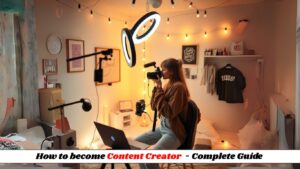
Introduction: Redefining Style with Sustainability
The fashion industry is undergoing a radical transformation, with sustainable fashion designers leading the charge toward ethical, eco-conscious clothing. As consumers demand transparency and environmental responsibility, these innovators merge creativity with sustainability to reduce waste, pollution, and exploitation in fashion.
This guide covers everything you need to know about this impactful career:
- The evolution of sustainable fashion
- What sustainable fashion designers do
- Salary expectations at different career stages
- Essential qualifications and skills
- Step-by-step guide to launching your career
- Future trends and job opportunities
1. The History of Sustainable Fashion
Early Roots (Pre-20th Century)
- 1700s–1800s: Clothing was locally sourced, handmade, and repaired repeatedly.
- Industrial Revolution (1800s): Mass production led to textile waste and labor exploitation.
The Rise of Eco-Conscious Fashion (1960s–1990s)
- 1960s–70s: Hippie movement popularized natural fibers and secondhand clothing.
- 1980s: Patagonia and Esprit launch eco-friendly collections.
- 1991: The term “sustainable fashion” is coined by design activist Kate Fletcher.
Modern Sustainable Fashion Movement (2000s–Present)
- 2006: The documentary The True Cost exposes fast fashion’s dark side.
- 2013: Rana Plaza collapse sparks global demand for ethical fashion.
- 2019: Greta Thunberg champions climate activism, influencing fashion choices.
- 2020s: Circular fashion (recycling, upcycling, rental models) goes mainstream.
2. What Does a Sustainable Fashion Designer Do?
Core Responsibilities
✔ Design eco-friendly collections (using organic, recycled, or biodegradable fabrics)
✔ Source sustainable materials (organic cotton, hemp, Tencel, Piñatex)
✔ Minimize waste through zero-waste pattern cutting and upcycling
✔ Ensure ethical labor practices (fair wages, safe working conditions)
✔ Educate consumers on sustainable fashion choices
Specialization Areas
| Specialization | Focus Areas | Key Employers |
|---|---|---|
| Eco-Friendly Materials | Developing plant-based leathers, recycled textiles | Bolt Threads, MycoWorks |
| Zero-Waste Design | Pattern-making that eliminates fabric waste | Eileen Fisher, Zero Waste Daniel |
| Upcycling & Vintage | Transforming discarded textiles into new garments | Marine Serre, Re/Done |
| Slow Fashion | Small-batch, high-quality timeless pieces | Stella McCartney, Gabriela Hearst |
| Tech-Driven Sustainability | 3D printing, digital fashion to reduce waste | The Fabricant, Unmade |
3. Sustainable Fashion Designer Salary Guide
Global Salary Ranges (Annual)
| Experience Level | Entry-Level (0–3 yrs) | Mid-Career (4–9 yrs) | Senior (10+ yrs) |
|---|---|---|---|
| United States | $40,000–$60,000 | $65,000–$90,000 | $100,000–$200,000+ |
| Europe | €30,000–€45,000 | €50,000–€75,000 | €80,000–€150,000 |
| India/Southeast Asia | $15,000–$25,000 | $30,000–$50,000 | $60,000–$100,000 |
Highest-Paying Sectors
- Luxury Sustainable Brands (Stella McCartney, Gabriela Hearst)
- Tech-Driven Fashion Startups (using AI for sustainable design)
- Corporate Sustainability Roles (H&M Conscious, Nike Sustainability)
4. Essential Qualifications & Skills
Educational Pathways
- Fashion Design Degree (with sustainability focus)
- Top schools: Central Saint Martins, FIT, Parsons
- Sustainable Fashion Certifications
- Sustainable Design (CSM, Copenhagen School of Design)
- Circular Fashion (Ellen MacArthur Foundation)
- Self-Taught Route
- Online courses (Coursera’s “Fashion & Sustainability”)
- Apprenticeships with ethical brands
Must-Have Skills
✔ Material knowledge (organic, recycled, biodegradable fabrics)
✔ Zero-waste pattern cutting
✔ Supply chain transparency (traceability tools like Blockchain)
✔ Digital design tools (Clo3D, Adobe Illustrator)
✔ Marketing & storytelling (promoting sustainability to consumers)
5. How to Get Started in Sustainable Fashion
Step 1: Build Your Knowledge
- Read “Fashionopolis” by Dana Thomas
- Follow sustainable fashion influencers (Venetia La Manna, Aja Barber)
Step 2: Gain Hands-On Experience
- Intern at eco-conscious brands (Reformation, Patagonia)
- Volunteer with fashion recycling NGOs (Fashion Revolution, Remake)
Step 3: Develop Your Portfolio
- Create a capsule collection using upcycled materials
- Showcase sustainable design processes (mood boards, fabric swatches)
Step 4: Launch Your Career
- Freelance for small sustainable brands
- Apply for roles in:
- Sustainable design studios
- Corporate sustainability teams
- Fashion tech startups
6. Future Trends & Career Growth
Emerging Opportunities
- Biofabrication (lab-grown leather, mushroom-based textiles)
- Digital Fashion (NFT clothing to reduce physical waste)
- Rental & Resale Platforms (The RealReal, Rent the Runway)
Disruptive Innovations
- AI for sustainable trend forecasting
- Blockchain for supply chain transparency
- Waterless dyeing techniques
Long-Term Career Paths
- Creative Director at a sustainable luxury brand
- Sustainability Consultant for fashion corporations
- Entrepreneur launching an eco-conscious label
Final Verdict: Is Sustainable Fashion Design Right for You?
Best For:
- Creative minds passionate about ethics + aesthetics
- Problem-solvers who want to reduce fashion waste
- Advocates for fair labor and environmental justice
Challenges:
- Higher material costs than fast fashion
- Need for consumer education on sustainable pricing
Next Steps
✅ Start a DIY upcycling project
✅ Attend sustainable fashion events (Première Vision, Copenhagen Fashion Summit)
✅ Follow #WhoMadeMyClothes on social media
With 87% of consumers now preferring sustainable brands, the future of fashion is green. Will you design it? 🌿👗













Post Comment